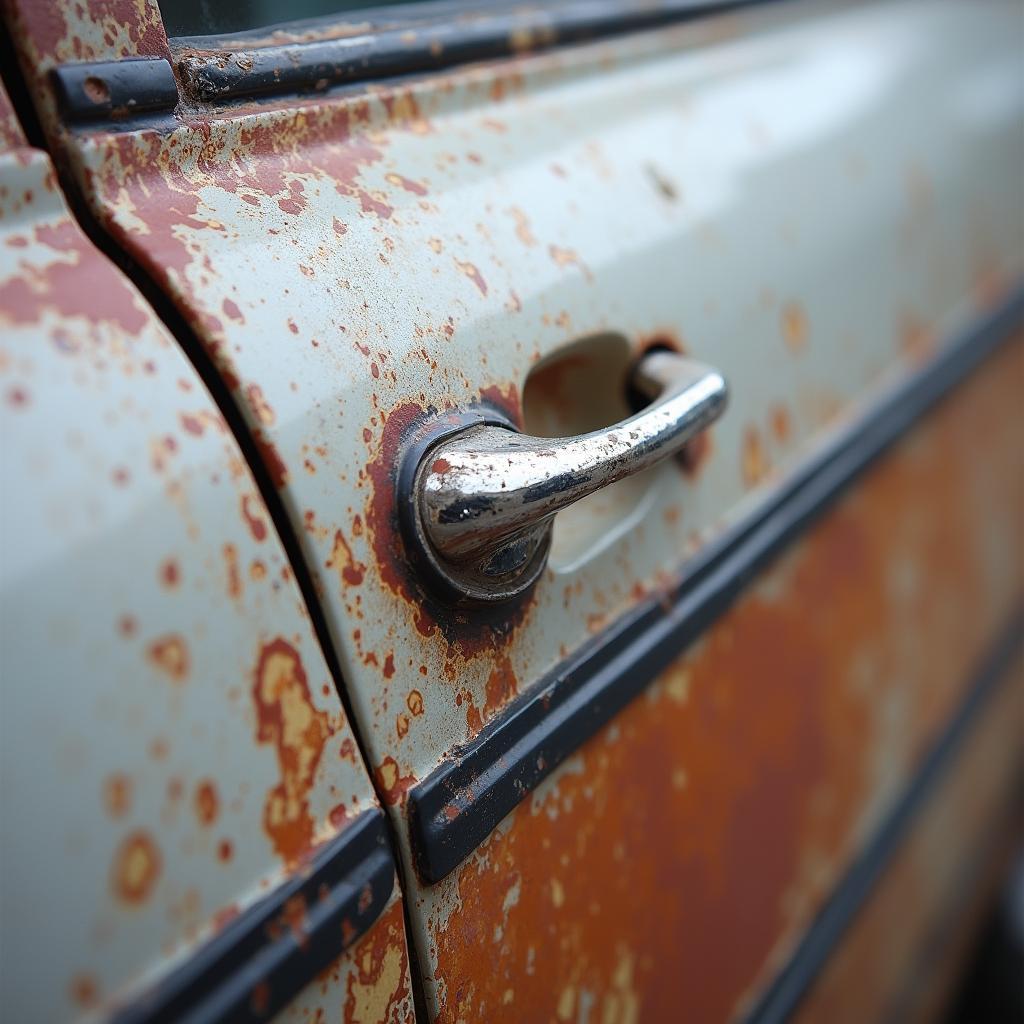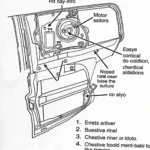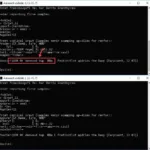Dealing with peeling paint on your car? It’s an eyesore, but before you panic and call the auto body shop, consider this: a DIY paint peel repair might be more achievable than you think. This guide will walk you through the steps to tackle this common car problem and get your vehicle looking sharp again.
Understanding Why Car Paint Peels
Before diving into the repair, it’s helpful to understand the culprits behind peeling paint.
- Sun Damage: The sun’s UV rays are a major enemy of car paint, causing it to fade and become brittle, leading to peeling.
- Oxidation: This natural process occurs when the paint’s protective layer erodes, exposing it to the elements and causing it to peel.
- Improper Washing: Using harsh chemicals or abrasive materials during washing can strip away the paint’s protective layer.
- Poor Quality Paint Job: If your car received a shoddy paint job in the past, whether from a previous owner or a less-than-reputable shop, peeling is more likely.
 Peeling paint due to a poor quality paint job
Peeling paint due to a poor quality paint job
DIY Paint Peel Repair: What You’ll Need
- Cleaning Supplies: Car wash soap, microfiber cloths, wax and grease remover
- Sandpaper: Assortment of grits (200, 400, 600, 1000)
- Primer: Choose a primer specifically designed for automotive use
- Automotive Paint: Match the existing paint color of your car
- Clear Coat: Provides a protective and glossy finish
- Masking Tape and Paper: To protect areas you don’t want to paint
- Paint Spray Gun (optional): For smoother, more even application
- Safety Gear: Gloves, mask, and safety glasses
DIY Paint Peel Repair: A Step-by-Step Guide
-
Prep Work is Key: Thoroughly wash your car, paying close attention to the area with peeling paint. Use a wax and grease remover to ensure a clean surface.
-
Sanding: Start with the lowest grit sandpaper (200) and sand down the peeling paint until you reach a smooth, even surface. Gradually work your way up to higher grits (400, 600) to feather the edges and create a seamless transition.
-
Priming Time: Apply a thin, even coat of primer to the sanded area. Allow it to dry completely according to the manufacturer’s instructions. You may need multiple coats for complete coverage.
-
Ready to Paint: Once the primer is dry, lightly sand it with 600-grit sandpaper to create a smooth base for the paint. Clean the area thoroughly to remove any dust.
-
Painting: Apply thin, even coats of automotive paint, allowing each coat to dry completely before applying the next. For larger areas, consider using a paint spray gun. how to repair damaged paint on a car
-
Sealing the Deal: After the final coat of paint has dried, apply a clear coat to protect the paint and give it a glossy finish. Again, use thin, even coats and allow for proper drying time between each. paint leveler car repair
-
Final Touches: Once everything is completely dry, use 1000-grit sandpaper to lightly wet sand the clear coat for a smooth, professional-looking finish.
Tips for a Successful DIY Paint Peel Repair
- Patience is a Virtue: Don’t rush the process. Allow ample drying time between each step for the best results.
- Work in a Well-Ventilated Area: Paint fumes can be harmful, so ensure adequate ventilation in your workspace.
- Less is More: Apply thin coats of primer, paint, and clear coat to prevent drips and ensure even coverage. how to repair paint car
- Color Matching: Take your time to find an exact match for your car’s paint color.
- Don’t be Afraid to Seek Help: If you’re unsure about any step or encounter difficulties, consult a professional auto body shop.
“Remember, a successful DIY paint repair is all about preparation and patience,” says John Smith, a seasoned auto body specialist with over 20 years of experience. “Don’t be afraid to take your time, follow the steps carefully, and if you’re not confident, don’t hesitate to seek professional help.”
Conclusion
A DIY paint peel repair can save you money and give you the satisfaction of restoring your car’s appearance. While it requires some time, effort, and attention to detail, the results can be well worth it. By following these steps and tips, you can tackle this common car problem and have your vehicle looking its best again. And remember, if the damage is extensive or you’re unsure about any part of the process, a professional auto body shop is always there to help.


